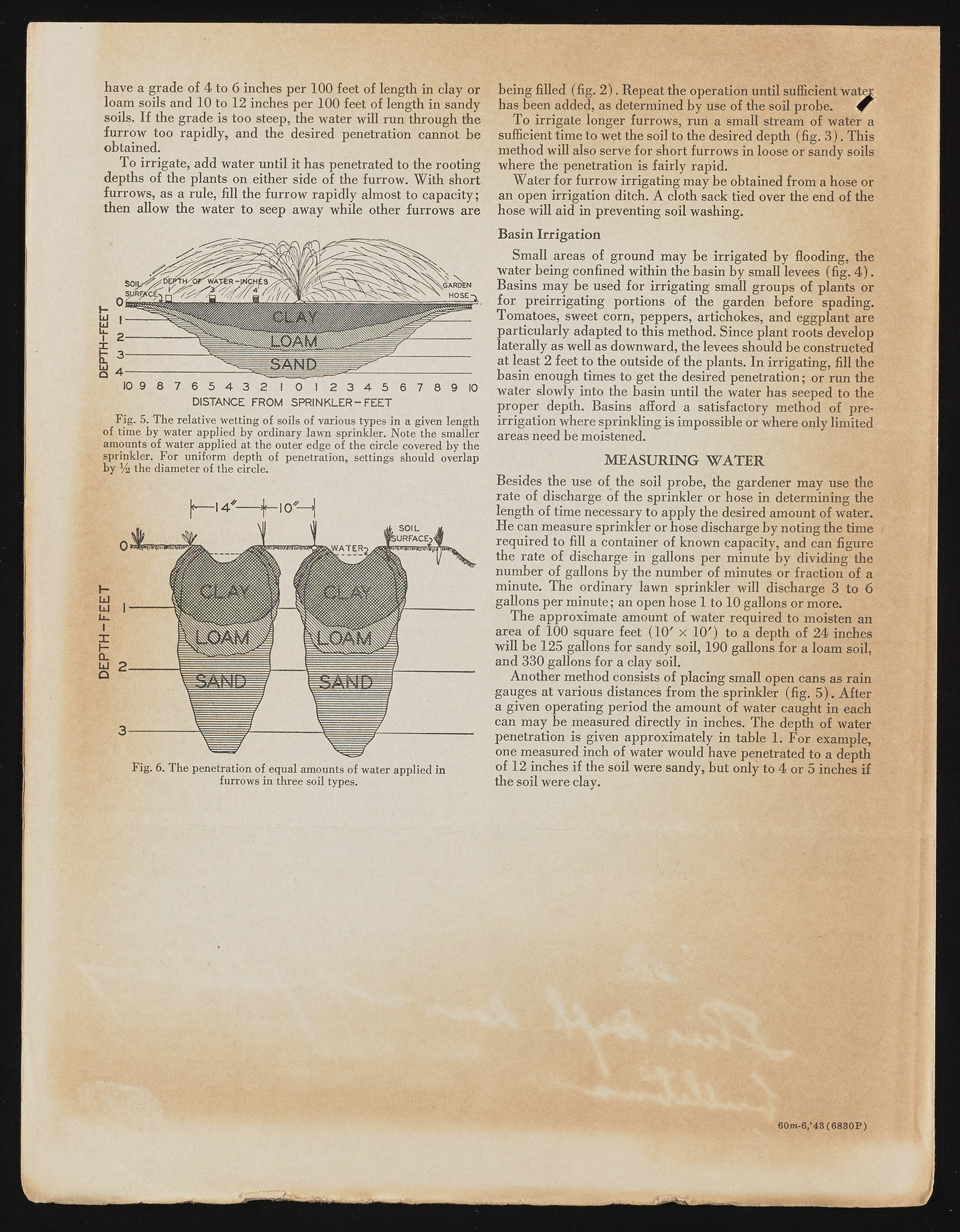Copyright & Fair-use Agreement
UNLV Special Collections provides copies of materials to facilitate private study, scholarship, or research. Material not in the public domain may be used according to fair use of copyrighted materials as defined by copyright law. Please cite us.
Please note that UNLV may not own the copyright to these materials and cannot provide permission to publish or distribute materials when UNLV is not the copyright holder. The user is solely responsible for determining the copyright status of materials and obtaining permission to use material from the copyright holder and for determining whether any permissions relating to any other rights are necessary for the intended use, and for obtaining all required permissions beyond that allowed by fair use.
Read more about our reproduction and use policy.
I agree.Information
Digital ID
Permalink
Details
More Info
Rights
Digital Provenance
Publisher
Transcription
have a grade of 4 to 6 inches per 100 feet of length in clay or loam soils and 10 to 12 inches per 100 feet of length in sandy soils. If the grade is too steep, the water will run through the furrow too rapidly, and the desired penetration cannot be obtained. To irrigate, add water until it has penetrated to the rooting depths of the plants on either side of the furrow. With short furrows, as a rule, fill the furrow rapidly almost to capacity; then allow the water to seep away while other furrows are DISTANCE FROM SPRINKLER-FEET Fig. 5. The relative wetting of soils of various types in a given length of time by water applied by ordinary lawn sprinkler. Note the smaller amounts of water applied at the outer edge of the circle covered by the sprinkler. For uniform depth of penetration, settings should overlap by % the diameter of the circle. (t-— I A*----- If-lO *— >( Fig. 6. The penetration of equal amounts of water applied in furrows in three soil types. being filled (fig. 2 ). Repeat the operation until sufficient water has been added, as determined by use of the soil probe. f To irrigate longer furrows, run a small stream of water a sufficient time to wet the soil to the desired depth (fig. 3 ). This method will also serve for short furrows in loose or sandy soils where the penetration is fairly rapid. Water for furrow irrigating may be obtained from a hose or an open irrigation ditch. A cloth sack tied over the end of the hose will aid in preventing soil washing. Basin Irrigation Small areas of ground may be irrigated by flooding, the water being confined within the basin by small levees (fig. 4 ). Basins may be used for irrigating small groups of plants or for preirrigating portions of the garden before spading. Tomatoes, sweet corn, peppers, artichokes, and eggplant are particularly adapted to this method. Since plant roots develop laterally as well as downward, the levees should be constructed at least 2 feet to the outside of the plants. In irrigating, fill the basin enough times to get the desired penetration; or run the water slowly into the basin until the water has seeped to the proper depth. Basins afford a satisfactory method of preirrigation where sprinkling is impossible or where only limited areas need be moistened. M EASU RING W A T E R Besides the use of the soil probe, the gardener may use the rate of discharge of the sprinkler or hose in determining the length of time necessary to apply the desired amount of water. He can measure sprinkler or hose discharge by noting the time required to fill a container of known capacity, and can figure the rate of discharge in gallons per minute by dividing the number of gallons by the number of minutes or fraction of a minute. The ordinary lawn sprinkler will discharge 3 to 6 gallons per minute; an open hose 1 to 10 gallons or more. The approximate amount of water required to moisten an area of 100 square feet (10' x 10') to a depth of 24 inches will be 125 gallons for sandy soil, 190 gallons for a loam soil, and 330 gallons for a clay soil. Another method consists of placing small open cans as rain gauges at various distances from the sprinkler (fig. 5 ). After a given operating period the amount of water caught in each can may he measured directly in inches. The depth of water penetration is given approximately in table 1. For example, one measured inch of water would have penetrated to a depth of 12 inches if the soil were sandy, but only to 4 or 5 inches if the soil were clay. 60m-6,’4 3 ( 6 8 3 0 P )

